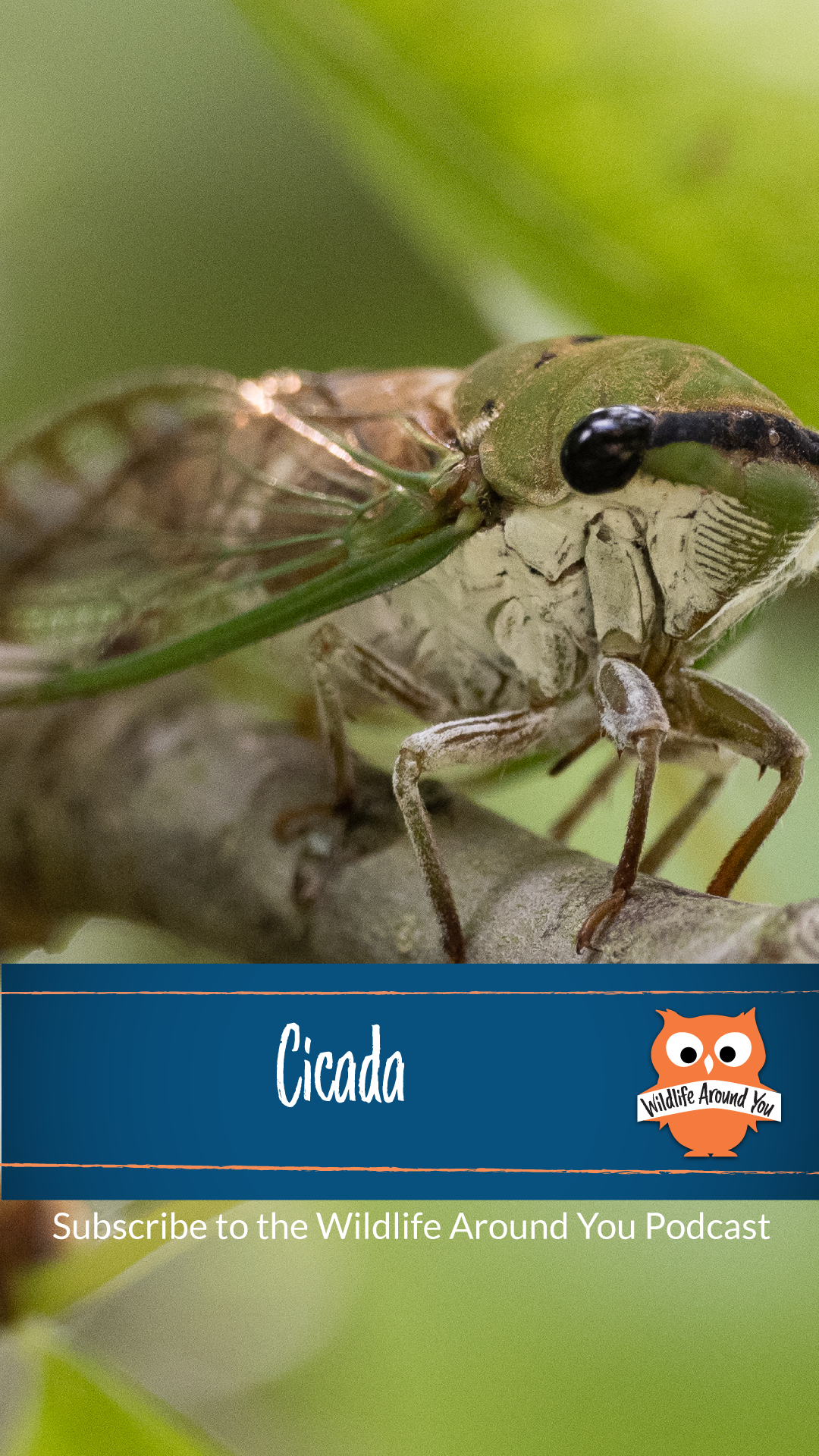Identification
- They have a stout body, a broad head with large compound eyes, and two pairs of wings. Their eyes are set far apart on the head.
- Cicadas are typically known for their distinctive, loud buzzing or clicking sound which is made by the rapid buckling and unbuckling of drumlike tymbals. To us, it looks like they are vibrating their abdomen.
- The smallest cicada in North America is half an inch long. Others can reach 3 inches long, including one in Southeast Asia that has an 8-inch wingspan.
- You may have noticed their skins latched onto things around your backyard.
Habitat
- Cicadas can be found on every continent except Antarctica.
- They prefer warm, humid climates and are often found in forests, woodlands, and grasslands.
Nesting
- Cicadas do not build homes, but they do spend most of their lives underground as nymphs.
- Nymphs live in tunnels they create in soil and feed on tree roots for several years before emerging as adults.
Behavior
- Cicadas are most active during the day and can often be seen basking in the sun.
- Cicadas are known for their loud mating calls, which can be heard from up to a mile away
Offspring
- Female cicadas lay their eggs in tree branches, where they hatch into nymphs. They can lay up to 600 eggs.
- Nymphs drop to the ground and burrow into the soil, where they will remain until they emerge as adults.
Predators
- Cicadas are preyed upon by birds, rodents, and other animals. Even humans.
- Some species of cicadas have developed defenses against predators, such as toxic chemicals in their bodies.
Diet
- Cicadas feed on the sap of trees and shrubs using their long, straw-like mouthparts.
- They can cause damage to trees and crops when they feed in large numbers.
Fun Facts
- Cicadas are known for their long life cycles, which can range from two to 17 years depending on the species. Most of their life is underground.
- Some species of cicadas emerge in massive numbers, creating what is known as a “cicada invasion” or “cicada plague”.
- Cicadas are not harmful to humans and are often considered a natural part of the environment.
- Their “songs” can reach 120 decibels which is as loud as a chainsaw. In some areas, people plan outdoor activities away from their active season due to the deafening sounds.
- They are not locusts, even though people confusedly call them that sometimes. Locusts are more like grasshoppers.
- They only emerge when the ground is 64 degrees Fahrenheit. The temperature triggers the nymphs to move en masse toward the surface, usually shortly after sunset.

